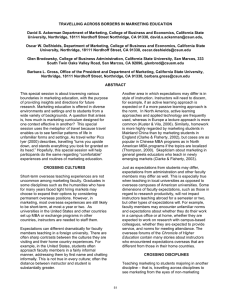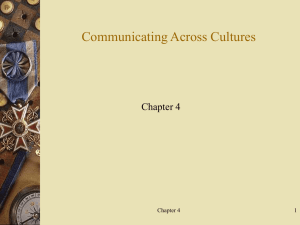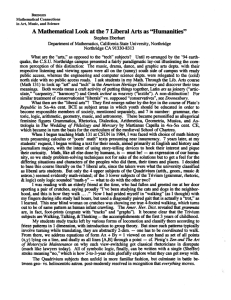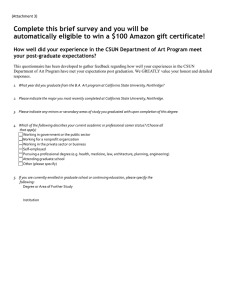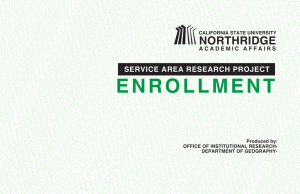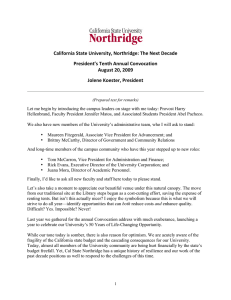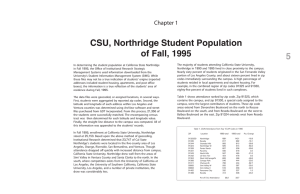NUDGING STUDENTS TOWARD GREATER TOLERANCE FOR AMBIGUITY: TIPS AND TRAPS
advertisement
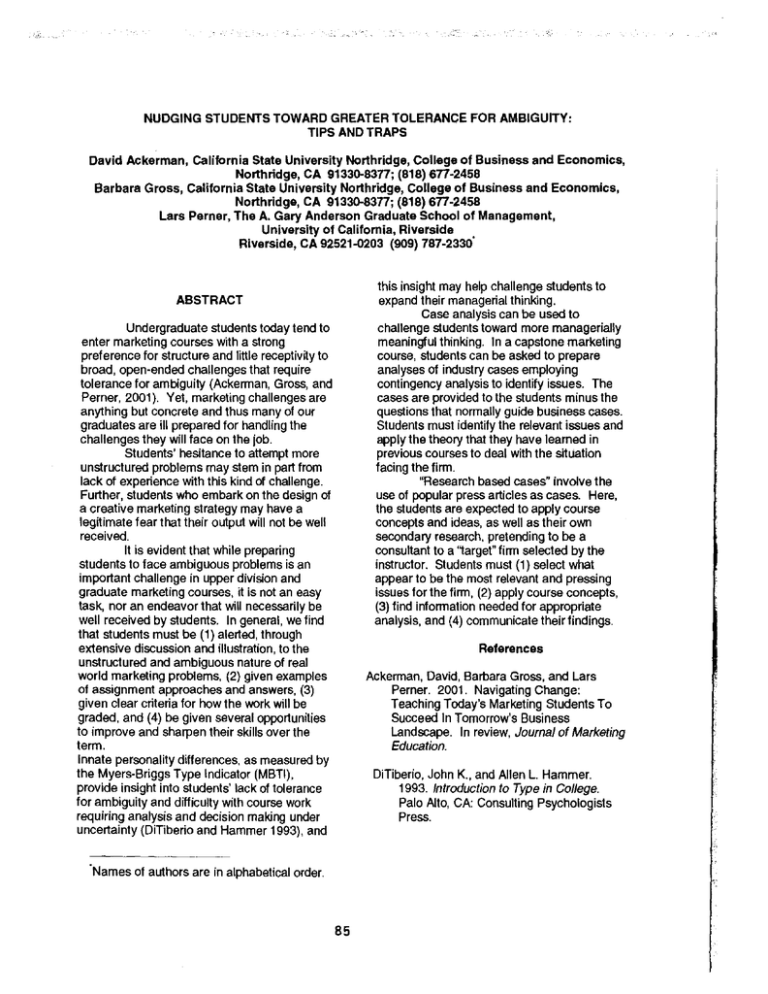
NUDGING STUDENTS TOWARD GREATER TOLERANCE FOR AMBIGUITY: TIPS AND TRAPS David Ackerman, California State University Northridge, College of Business and Economics, -2458 Northridge, CA 91330-83n; (818) Barbara Gross, California State University Northridge, College of Business and Economics, Northridge, CA 91330-83n; (818) sn-2458 Lars Perner, The A. Gary Anderson Graduate School of Management, University of California, Riverside Riverside, CA 92521-0203 (909) 787-2330' sn this insight may help challenge students to expand their managerial thinking. Case analysis can be used to challenge students toward more managerially meaningful thinking. In a capstone marketing course, students can be asked to prepare analyses of industry cases employing contingency analysis to identify issues. The cases are provided to the students minus the questions that normally guide business cases. Students must identify the relevant issues and apply the theory that they have learned in previous courses to deal with the situation facing the firm. "Research based cases" involve the use of popular press articles as cases. Here, the students are expected to apply course concepts and ideas, as well as their own secondary research, pretending to be a consultant to a 'target" firm selected by the instructor. Students must (1) select what appear to be the most relevant and pressing issues for the firm, (2) apply course concepts, (3) find information needed for appropriate analysis, and (4) communicate their findings. ABSTRACT Undergraduate students today tend to enter marketing courses with a strong preference for structure and little recepliv~y to broad, open-ended challenges that require tolerance for ambiguity (Ackerman, Gross, and Perner, 2001). Yet, marketing challenges are anything but concrete and thus many of our graduates are ill prepared for handling the challenges they will face on the job. Students' hesitance to attempt more unstructured problems may stem in part from lack of experience with this kind of challenge. Further, students who embark on the design of a creative marketing strategy may have a leg~imate fear that their output will not be well received. It is evident that while preparing students to face ambiguous problems is an important challenge in upper division and graduate marketing courses, it is not an easy task, nor an endeavor that will necessarily be well received by students. In general, we find that students must be (1) alerted, through ex1ensive discussion and illustration, to the unstructured and ambiguous nature of real world marketing problems, (2) given examples of assignment approaches and answers, (3) given clear criteria for how the work will be graded, and (4) be given several opportunities to improve and sharpen their skills over the term. Innate personality differences, as measured by the Myers-Briggs Type Indicator (MBTI), provide insight into students' lack of tolerance for ambiguity and difficulty with course work requiring analysis and decision making under uncertainty (DiTiberio and Hammer 1993), and References Ackerman, David, Barbara Gross, and Lars Perner. 2001. Navigating Change: Teaching T oday's Marketing Students To Succeed In Tomorrow's Business Landscape. In review, Journal of Marketing Education. DiTiberio, John K., and Allen L. Hammer. 1993. Introduction to Type in College. Palo Alto, CA: Consulting Psychologists Press. 'Names of authors are in alphabetical order. 85

